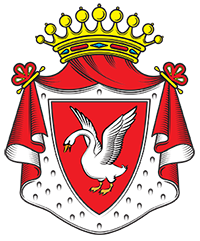PIOTR WŁOSTOWIC
Piotr Włostowic (?-1153), also known as Włost or Włast, later called Dunin, was undoubtedly one of the most distinguished representatives of the Swan family. Although many records and chronicles indicate that the Swan clan was significant even before Piotr Włostowic, his true power and influence marked the beginning of their prominence. Among all known magnates of the early Middle Ages, Piotr Włostowic is the only figure, aside from Bolesław III Krzywousty, to have the largest amount of historical sources, including four papal bulls.
In 1117, Piotr assumed the position of princely palatine (comes palatinus) and was included in the circle of closest advisors to Bolesław III Krzywousty. The palatine (voivode) was the second person in the state, the prince's deputy - he commanded the army on behalf of the prince, acted in his stead in courts, supervised security and order at the court, and replaced the ruler in case of minority. He held this office until 1124 and during this time, he famously abducted the Rus prince Wołodar Rościsławicz, which likely facilitated Krzywousty's actions in Pomerania.


The abduction of the Rus prince Wołodar in 1120 by Piotr Włast Dunin. Painting by Juliusz Kossak, 1872.
The tradition attributes to Piotr a highly ambitious foundation activity, overshadowing all other founders of early medieval religious buildings. According to accounts, he financed the construction of 77 temples, leading to the oldest type of Romanesque churches in Poland being named after his nickname as Dunin's churches.
Among his foundations was one of the largest monastic complexes in Central Europe at that time - the Benedictine Abbey in Olbin near Wrocław, as well as the Church of St. Salwator, St. John's Church, the Carmelite Church on Piasek, the now non-existent Church of St. Lawrence, and the Norbertine Monastery on Salwator in Kraków.
The construction of churches and monasteries demonstrated Piotr’s high understanding that this was the only way to elevate the culture of the 12th century nation, while bringing in Flemish monks and settlers without involving neighboring Germany was a purely political strategy.
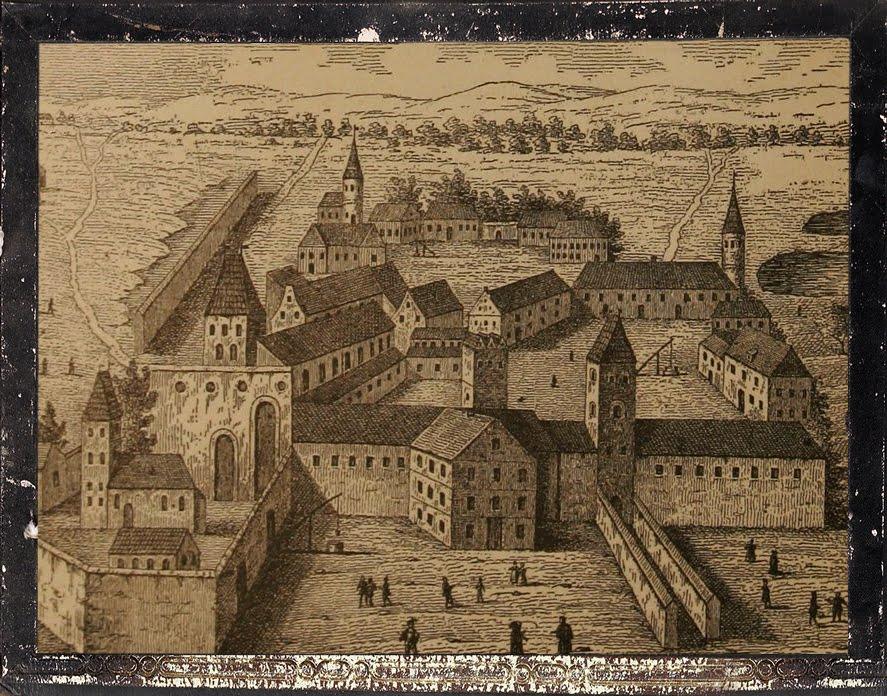
Benedictine Abbey in Ołbin.
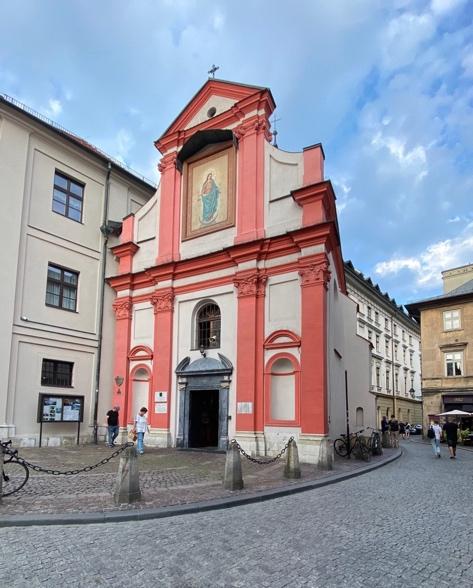
The Church of St. John in Kraków.

After the death of Bolesław Krzywousty, Włostowic continued to hold the office of voivode, this time serving Senior Władysław Wygnaniec. When a war broke out between the new ruler and his younger brothers, there was a conflict between the prince and the influential palatine under unclear circumstances. Piotr was deposed and blinded by order of Władysław. However, soon afterward, the prince fell victim to intrigue by his younger brothers, and the new Senior, Bolesław Kędzierzawy, reinstated Włostowic's favor. Despite his blindness, Piotr continued to hold the office until his death in 1153.

Scene of Piotr Włostowic's blinding. Engraving by Gottlieb Boettger from 1808.
Włostowic is remembered as a powerful palatine, a great benefactor, and a figure whose fate was perhaps the most extraordinary among all Polish voivodes of the early Middle Ages.
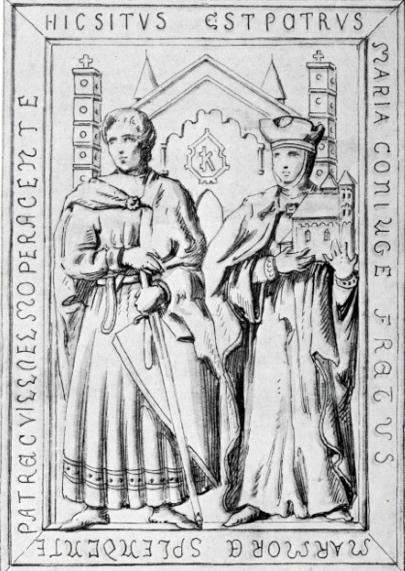
Tomb of Piotr Włostowic and his wife Maria, daughter of Kievan Prince Światopełk of the Rurykowicz dynasty. Drawing from the 18th century.
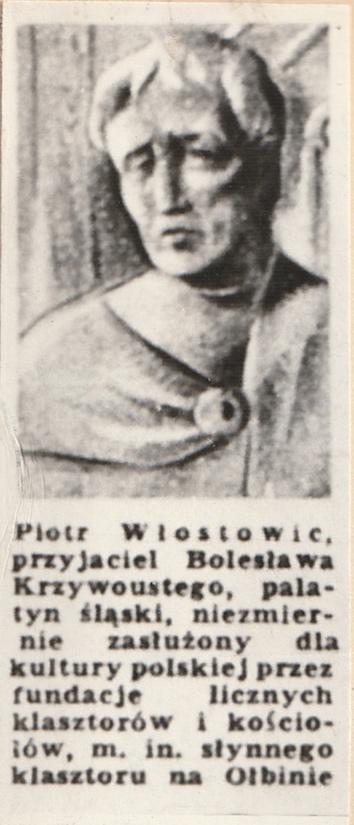
Piotr Włostowic, a friend of Bolesław Krzywousty, Silesian palatine, greatly contributed to Polish culture through the foundation of numerous monasteries and churches, including the famous monastery at Ołbin.

Piotr Włostowic brings Cistercians to Poland.
Jan Matejko, oil on panel, 109x163 cm, Silesian Museum in Wrocław.
Behind the man giving the keys to the abbot stands a knight with a flag waving, on which there is a white swan on a red background. Unfortunately, Matejko's commentary on this painting (sent by the artist Jerzy Dunin-Borkowski) was lost along with the entire family archive during World War I. The painting was titled Piotr Włost brings Cistercians to Poland, but such an event never took place in Polish history. Jan Matejko liked symbolism, which he often concealed in his paintings.
Piotr Włostowic's son, Świętosław of Skrzynno, was one of the most powerful lords in Małopolska (Lesser Poland), (he financed, among others, the church of St. Procopius in Strzelno). On the other hand, Świętosław's son was Archbishop of Gniezno Piotr of Skrzynno, the highest dignitary of the church, who was a founder or co-founder of the Gniezno Doors.
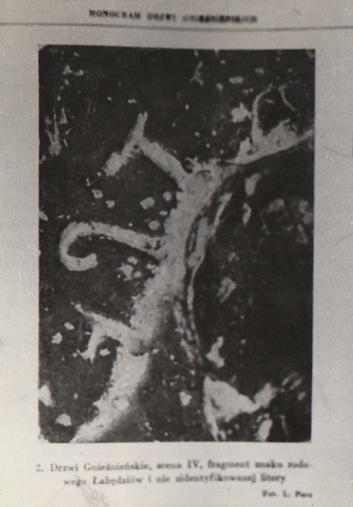
The Gniezno Doors, Scene IV, a fragment of the Swan coat of arms and an unidentified letter.
THE TIMES OF BOLESŁAW WSTYDLIWY
During the reign of Bolesław Wstydliwy, the highest offices were held by representatives of the Swan family, among whom were distinguished brothers - Włodzimierz and Sulisław. Włodzimierz of Skrzynno, castellan of Brzesko, castellan of Oświęcim, voivode of Kraków, through his valor achieved victory over the Tatars at Tursk, marking Poland's first triumph against this adversary. He perished in 1241 at Tarczek, at the hands of a previously defeated foe. Succeeding him as voivode of Kraków was his brother, Sulisław of Skrzynno, who also gave his life on the battlefield. He fell in 1241 at the Battle of Legnica, three weeks after his brother's death and three weeks after assuming the office of voivode.
THE TIMES OF WŁADYSŁAW II JAGIEŁŁO
During the reigns of Władysław Łokietek and Kazimierz Wielki (Casimir the Great), the Swan family did not actively participate in governing the state until 1410, when Andrzej of Skrzynno Dunin emerged on the political scene, first as an envoy to the Bohemian king Wacław and later as the Grand Chancellor of the Crown. In this role, he was involved in disputes with the Teutonic Knights and participated in the ceasefire agreement in Brodnica in 1416. He is mentioned as Magister in papal bulls, and Władysław II Jagiełło endorsed his candidacy for the Poznan bishopric. Mszczuj of Skrzynno (? – 1446) played a significant role in the battles against the Teutonic Knights. As a court knight of King Władysław, he probably killed the Grand Master Ulrich von Jungingen in the Battle of Grunwald.
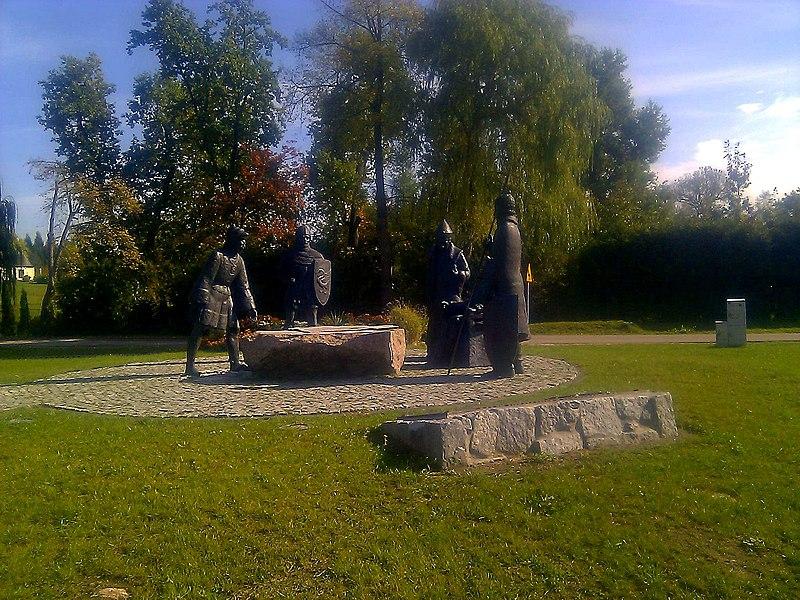
Mszczuj of Skrzynno (second from the left) in the Historical Park in Taczow.
In the battle of Koronowo in 1410, he significantly contributed to the victory over the Teutonic Knights. Two years later, he participated in the retinue of King Władysław II Jagiełło during a visit to Hungary, where he took part in knightly tournaments alongside other famous Polish knights. In 1428, he joined Grand Duke Witold in an expedition to Novgorod the Great, in 1431 he marched with Jagiełło against the rebellious Grand Duke of Lithuania Świdrygiell, and a year later, he commanded Polish reinforcements for the new Grand Duke, Zygmunt Kiejstutowicz, in the war against the deposed Duke Świdrygiell.
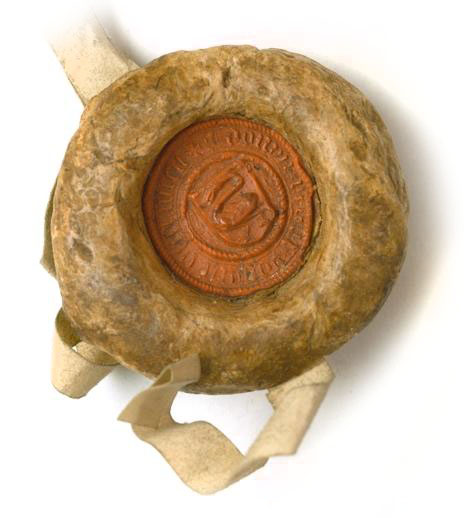
Seal with the Swan coat of arms, Vice-Chancellor Dziersław Dunin of Skrzynno.
THE UNION OF HORODLO
The Dunin family was not absent when the Polish-Lithuanian Commonwealth was forming. Dziersław of Skrzynno affixed his seal to the Union of Horodlo in 1413, accepting Andrzej Goligunt's coat of arms and family into the Dunin lineage, hence the emergence of Lithuanian and Ruthenian branches of the Swan family.
PIOTR DUNIN OF PRAWKOWICE
Piotr Dunin of Prawkowice (1415-1484) was another significant figure in history among the Dunin family. He served as the Vice-Chancellor, Vice-Chamberlain, Grand Crown Hetman, and Compiductor Supremus. Piotr was a courtier of Kazimierz Jagiellończyk, after which he became the burgrave of Krakow and the Grand Marshal of the Crown. The latter position involved commanding the royal banners. In this capacity, he accompanied King Kazimierz Jagiellończyk, on the expedition to Prussia, during which he was appointed the Vice-Chancellor of Sandomierz.
Piotr Dunin was the supreme commander of the royal forces in the Thirteen Years' War, where his tactical talent and authority as a leader undoubtedly contributed to Poland's victory over the Teutonic Order. On September 17, 1462, he triumphed in the Battle of Święcino, a pivotal moment in the war. Among Piotr Dunin's other significant achievements in conflicts with the Teutonic Knights were the capture of Gniew Castle in 1464 and Chojnice in 1466.
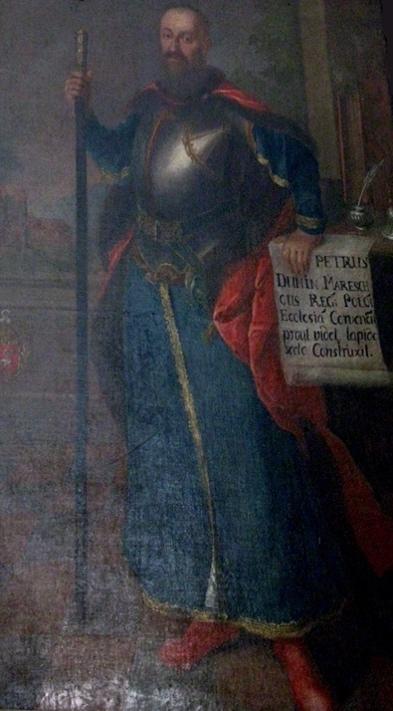
Piotr Dunin of Prawkowice in the basilica in Czerwińsk.
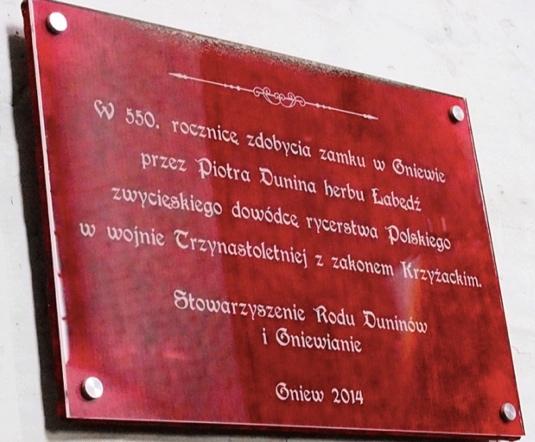
A plaque commemorating Piotr Dunin's capture of Gniew Castle.
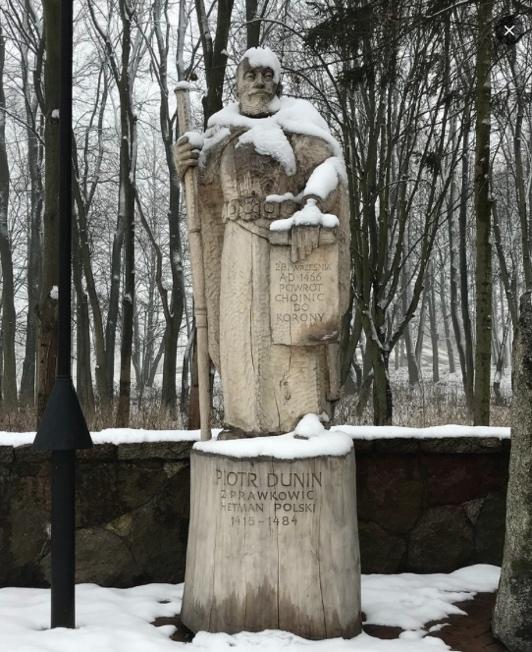
A sculpture commemorating Piotr Dunin of Prawkowice in Millennium Park in Chojnice.
On October 19, 1466, Piotr Dunin was present at the signing of the Second Treaty of Torun between Poland and the Teutonic Order. This treaty marked the end of the Teutonic state in its previous form, with Torun and Royal Prussia being incorporated into the Kingdom of Poland. Poland also regained control of the Vistula Land. Marian Jaroczyński immortalized this historic moment in his painting.
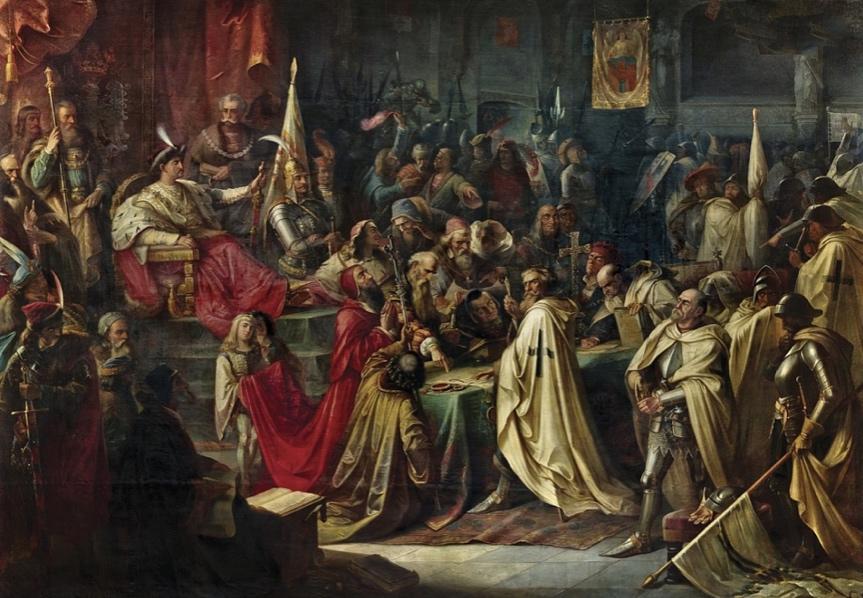
The Treaty of Torun, Marian Jaroczyński, 1870-73.
King Kazimierz Jagiellończyk seated, the Grand Master of the Teutonic Order Ludwik von Erlichshausen standing with a quill in hand, and the royal hetman Campiductor Supremus Piotr Dunin standing under the banner.
In 1476, Piotr purchased the town of Ujazd along with its castle and surrounding villages, as well as a part of the village of Święte in the Brzesko-Kujawski county.
He remained a trusted advisor to King Kazimierz Jagiellończyk and represented him in Royal Prussia until the end of his life. In 1478, he was appointed the mayor of Malbork, overseeing the wealthiest royal estate in Poland, where he gained a reputation as an efficient and just administrator. He also became the castellan of Sieradź in 1478 and, towards the end of his life in 1479, he was entrusted with the office of voivode of Kuyavia.

The ship Piotr Dunin was named in honor of the victorious leader of the Thirteen Years' War. It was a ten-thousand-ton vessel built in 1967 by the Szczecin Shipyard. Operating as the 92nd unit of the Polish Ocean Lines on the Indian route, it served from 1967 to 1992, with a total length of 152.4 meters.
BATTLE OF VIENNA 1683
In the chapel on Kahlenberg near Vienna, there are coats of arms of Polish nobility who participated in the Battle of Vienna in 1683. One sector features the Swan coat of arms and the participant in the battle, Dunin Jonizel Christophorus.

JAKUB DUNIN OF SKRZYNNO
Jakub Dunin (1680-1730) was a regent, Grand Chancellor of the Crown, Grand Referendary of the Crown, Vice-Chamberlain, Knight of the Order of the White Eagle and the Order of St. Lazarus of Mount Carmel. He participated in the Silent Sejm (Sejm Niemy) and served as an envoy of Augustus II the Strong, playing a prominent role in 1716 when he was sent to Tsar Piotr I with a demand for the withdrawal of Russian troops from Poland.

Jakub Dunin
Pastel 71x53.5 cm, in the collection of the National Museum in Kraków.
Piotr Dunin of Skrzynno, brother of Jakub Dunin, was the castellan of Radom, the starost of Zator and Bąków, served as the Vice-Chamberlain of Augustus II, the Marshal of the Queen's Court, and was also a Knight of the Order of the White Eagle.
Juliusz Kossak depicted his entry into Dresden as an envoy of the estates announcing Augustus' election as king in 1697.

Piotr Dunin.
Oil on canvas, 202x132 cm, in the collections at Wawel Royal Castle in Kraków.
Barbara Dunin Sanguszko (1718-1791), daughter of Jakub Dunin, was the Marshal of the Grand Duchy of Lithuania, a poet, translator, moralist, art patron, and philanthropist. She founded a social salon in Warsaw and was awarded the Dame of the Order of the Starry Cross for promoting moral principles among the younger generation.

Portrait of Duchess Barbara Dunin Sanguszko by Marceli Bacciarelli, oil on canvas, 77x67.5cm, 1757, in the collections of the Museum in Tarnów.
MIKOŁAJ DUNIN OF SKRZYNNO
Mikołaj Dunin (1603-1661) was chosen as the abbot of the Cistercians due to a gift from Władysław IV. He renounced secular benefits, entered the novitiate, and took over the administration of the abbey.

Mikołaj Dunin
PIOTR FRYDERYK DUNIN OF SKRZYNNO
Piotr Fryderyk (1710-1788) purchased the Zator starosty in 1778, consisting of 3 towns and 22 villages. He served as a delegate from the Duchies of Oświęcim and Zator at the coronation sejm in 1764, the starost of Drzewica, deputy starost of Krzemieniec, Major General of the Crown Army, and an assessor of the Royal Courts. In 1781, he was appointed a Knight of the Order of Saint Stanislaus.
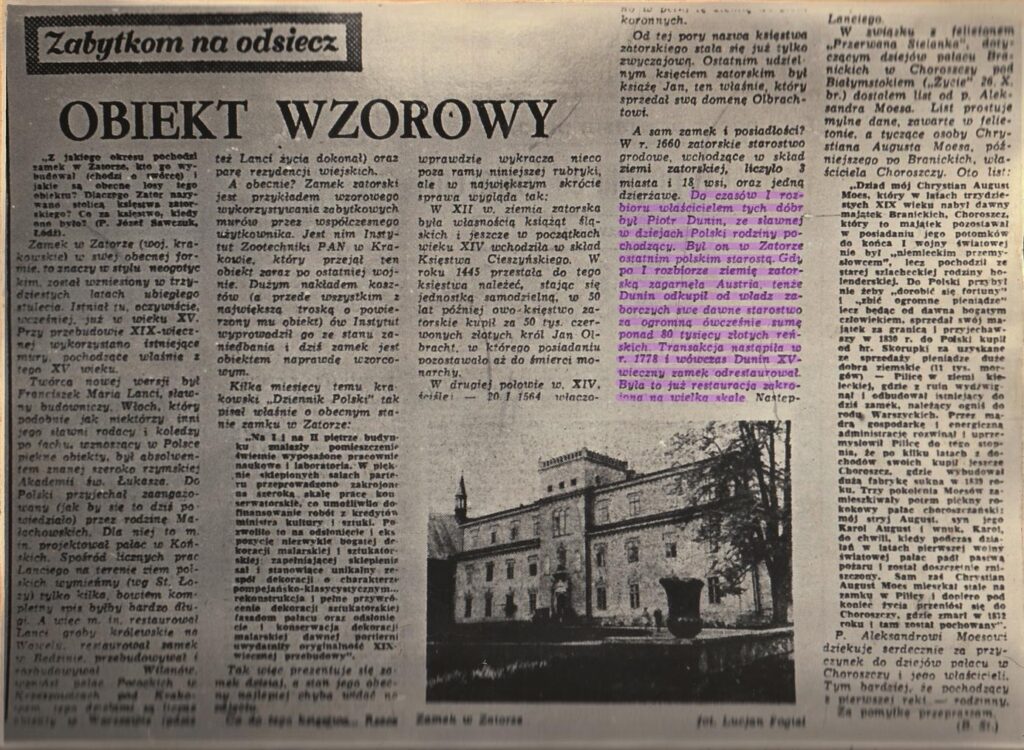
The castle in Zator - Exmplary object

The classical tomb of Piotr Fryderyk Dunin of Skrzynno and his wife Zofia Dunin (born Małachowskia), in the Mariacki Basilica in Kraków, in the chapel of St. John Nepomucene (Silesian Dukes), is made of black marble with the coats of arms of the Swan and Nałęcz. It was created by the city builder of Kraków, Szczepan Humbert.
JESUITS
Tomasz Dunin-Sulgostowski (1687-1758) was one of the most distinguished Jesuits of the first half of the 18th century. He served as the rector of the novitiate in Kraków twice, twice in Kalisz, and then as the rector of the Church of St. Peter in Kraków. From October 1743 to March 1747, he was the Polish provincial of the Jesuit order. By authorizing the printing of textbooks, he significantly contributed to the development of Jesuit education. In January 1756, after the establishment of the Polish Jesuit assistance in Rome, he was elected as its first assistant.

Tomasz Dunin
Wawrzyniec Dunin-Sulgostowski (1746-1824) joined the Jesuits in 1762, where he learned French, German, and Italian. After leaving the order, he dedicated the first decade to translating foreign preachers. In 1805, longing for the order, he left his pastoral position and went to Belarus, where he took vows, managed a noble convocation, taught French, and preached. After the Jesuits were expelled from Russia, he wandered to Rome, where he passed away in 1824.
ARCHBISHOP MARCIN DUNIN
Marcin Dunin-Sulgostowski (1774-1842) was a Polish archbishop, primate of Gniezno and Poznań. In 1815, he assumed the office of prelate chancellor of Gniezno, and in 1830, he was appointed to the archbishopric.
In 1837, he came into conflict with the Prussian government for upholding church law regarding mixed marriages, leading to his removal from the archbishop's office and arrest in October 1839. He was interned in Kołobrzeg Fortress until August 1840. Upon release, he returned to his archbishopric.

Archbishop Marcin Dunin

The monument of Archbishop Marcin Dunin in Kołobrzeg, next to the cathedral, features a figure of the archbishop in liturgical attire situated on a two-meter pedestal. At head height, the coat of arms of the Polish-Lithuanian Commonwealth and a royal crown are placed. Bars protruding from the sides of the figure allude to Marcin's imprisonment in Kołobrzeg Fortress.
KAJETAN DUNIN
Kajetan Dunin-Rzuchowski (1775-1848) was a colonel in the Polish army, a participant in Napoleon's Moscow campaign, the creator of the Krakow's defenders (Krakusi) in 1813, and a Knight of the Legion of Honour and the Military Cross.
In the Church of St. Peter and St. Paul on Grodzka Street in Kraków, there is a black marble epitaph dedicated to him and his wife Kajetania born Dobiecka.
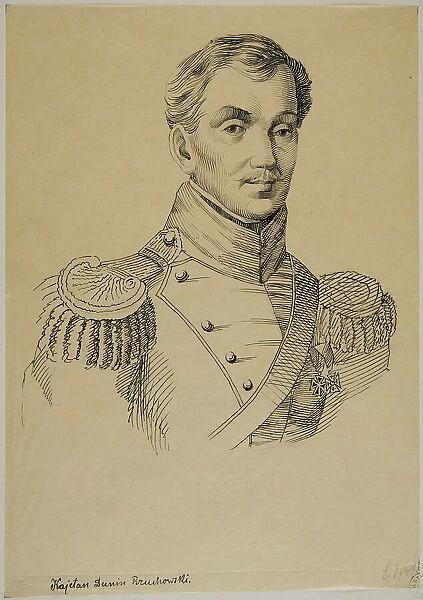
Kajetan Dunin-Rzuchowski

The epitaph of Kajetan Dunin-Rzuchowski and Kajetania born Dobiecka in the Church of St. Peter and St. Paul on Grodzka Street in Kraków.
ANASTAZY DUNIN
Anastazy Dunin (1802-1840) was a participant in the November Uprising, taking part in the attack on the arsenal on November 29, 1830. As an aide-de-camp to General Dwernicki, he distinguished himself in the Battle of Stoczek.
He was also active in the emigration movement, co-founding the Confederation of the Polish Nation in London in 1836 and being a member of the National Committee of Polish Emigration. He died in 1840 during Louis Bonaparte's expedition to Boulogne-sur-Mer.
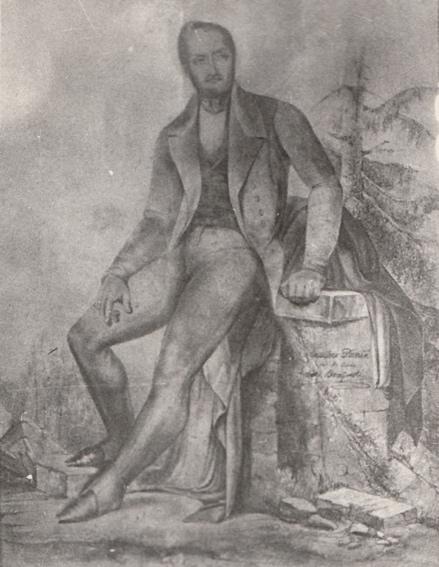
Anastazy Dunin.
Pencil drawing by Boratyński.
LUDWIK DUNIN
Ludwik Dunin-Sulgostowski (1892-1987) Ludwik Dunin-Sulgostowski (1892-1987) was undoubtedly one of the most socially active personalities in Eastern Małopolska (Eastern Lesser Poland). In 1922, he was elected as a member of the Sejm of the Republic of Poland. During World War I, he was one of the organizers of the defense of Borysław against Ukrainian forces. During the German occupation, he held the highest position in the Main Welfare Council. He also served as the director of the Land Credit Society in Lviv.
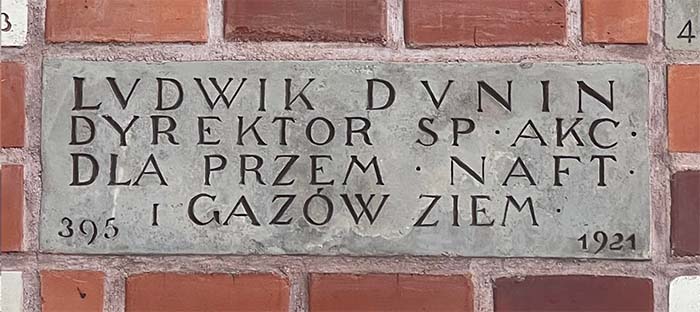
Brick at the Wawel Royal Castle in Kraków (number 394). Ludwik Dunin dyrektor S[pólki] A[kcyjnej] dla Przem[ysłu] Naft[owego] i Gazów Ziem[nich]. (Ludwik Dunin, director of the Joint Stock Company for Oil and Natural Gas Industry)
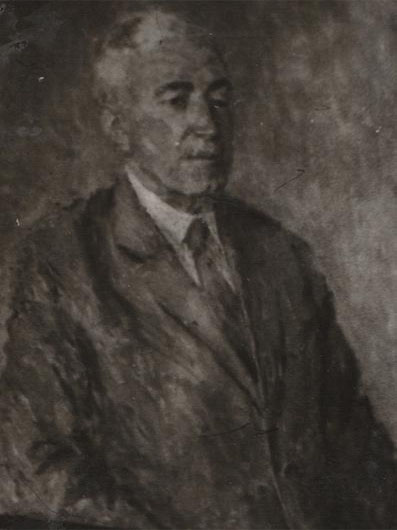
Painting by Jan Mycielski, oil on canvas, 1972.
TEODOR DUNIN
Teodor Dunin (1854-1909) was a physician, scientific researcher, social activist, and philanthropist. He made significant contributions to the National Museum in Kraków through his donations. He became a member of the Scientific Society in Warsaw in 1908. He also founded a facility for lung patients in Rudka pod Mrozami.
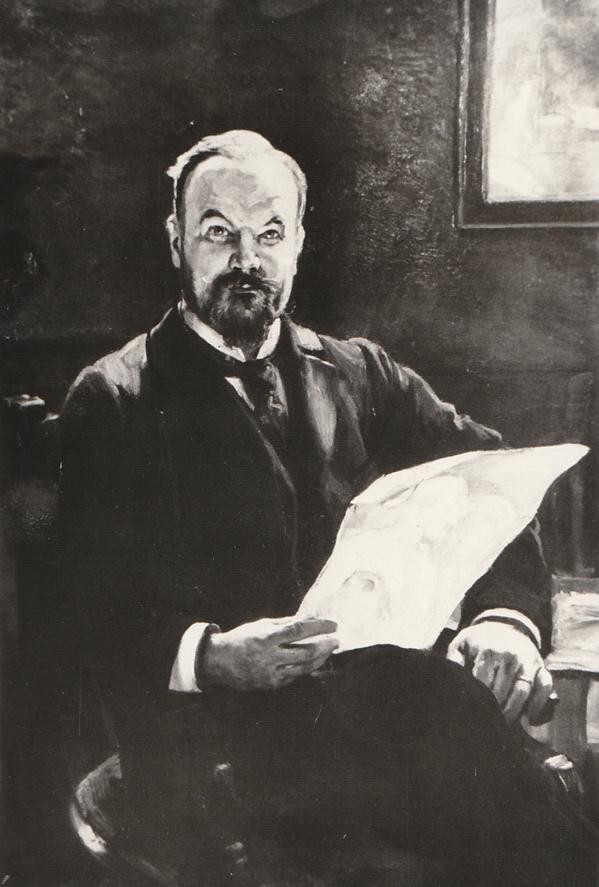
Dr. Teodor Dunin
